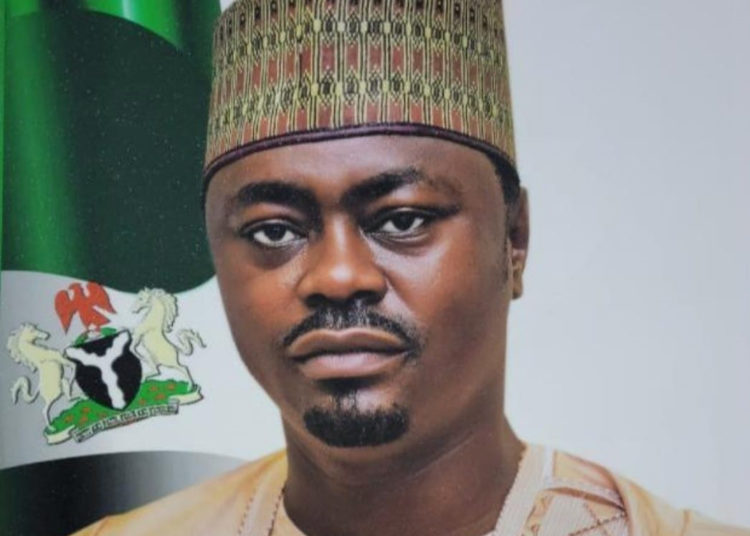There have been reports of flooding in some states, with attendant loss of lives and property. What has Kaduna State Emergency Management Agency (KADSEMA) put in place to avert this when it happens?
Kaduna State Emergency Management Agency (KADSEMA) has so far has been coordinating stakeholders in the state, including the Ministry of Environment, in terms of desilting drainages and water channels in Kaduna state. We are also sensitizing communities like Unguwan Romi, Kigo road, Bashama road, Karatudu, Rafin Guza and some other areas, on the need to locate residences that are known to be around flood prone areas. We have visited four local governments that appeared to be face flooding in the predictions of Nigerian Metrological Agency (NiMet) and the Nigerian Hydrological Services Agency (NIHSA). We visited these local governments to arrange higher grounds, where we intend to move victims in the event that the local governments face flooding.
We have also conducted coordination meetings, where we brought together all stakeholders and prepared them towards flooding. We worked closely with one of our donors, UNICEF, that graciously provided unconditional cash transfers to 5,000 households. They were assessed and supported with the sum of N35, 000 each. The funds were distributed to them through SOKU and Nigerian Red Cross. The fund is supposed to enable them move away from where they are, before the downpour gets too serious.
We have trained Local Emergency Management Committees. These comprise people who were selected from local governments as enshrined in the National Disaster Management Framework. His Excellency, Governor Nasir El-Rufai, ably represented by the Commissioner of Human Services and Social Development, inaugurated them in the month of March 2022. So, we have brought them together and trained them, to know what we expect of them, to encourage them to return to their local governments and cascade what they have learnt as well as to identify volunteers from communities in their local governments, and train them. This will enable them to help when the need arises.
We have a plan in place, again with funding from UNICEF, to review the 2022 Risk Analysis Map for Kaduna state, and we will also update the Multisectoral Contingency Plan. These are all efforts that we have put together, preparatory to the foreseeable flooding. So far, all of the four local governments that were predicted to face flooding in 2022, we have not heard of any such incidents. However, we experienced a flash flood in Kubau local government about four weeks ago, in the first week of August. We were there, we assessed the situation; a number of houses were submerged and we have been able to provide succour to the affected people. So far, these are what we have done to prepare for the session.
You had a training that just end, what was the nature of the training?
That was the same training that I talked about, for the Local Emergency Management Committees. These are senior government officials in the local government. Every local government has such a structure which is composed of different Directors, including security agents. Every local government has nine people that form the LEMC. So, we brought them together, trained them on emergency preparedness and response. We got our colleagues from the Kaduna State Peace Commission to teach them on early warning and response disaster management, community participation in the disaster management, camp coordination and camp management. These are broad topics or areas in disaster management, that were summarised in very practical terms and the participants went through all of these, with some hands-on exercises.
Some people see flooding as a natural disaster while others think it is man-made. How will you describe the incidence of flooding in Kaduna state? Is it man-made or a natural disaster?
It is both, in the sense that flooding happens even in the wilderness. And there can be flooding in urban and rural environments, depending on our behaviours. If we continue to dump wastes in water channels and water ways, then they will block the free flow of water. This will lead water to residential areas and people’s houses. So, this kind of flooding is caused by our attitude as human beings.
Last year, KADSEMA unfolded a five-year Contingency Plan. What is the plan all about and what feedback has the agency received regarding its workability?
When I came in as Executive Secretary, that was the first thing that I noticed – a Contingency Plan for five years. This is not done anywhere in the practice of disaster management. In fact, in some climes, Contingency Plans are reviewed twice a year. So, I quickly observed that and I noted that it has to be reviewed. As I mentioned earlier, I have been able to secure funding from UNICEF and that is the activity that we had in Zaria. We reviewed the Risk Analysis Map, we looked at all the hazard areas in Kaduna state, which usually changes. New hazards emerge as others are dealt with. So, this informs why both the Hazard Analysis and the Contingency Plan must be reviewed periodically. We worked with the relevant MDAs in Kaduna state, the donors, UNICEF, UNDP, NGOs and National Emergency Management Agency and reviewed these documents.
As you know, a Contingency Plan is a plan that is contingent on emergency situations. You could have different hazards living beneath you but if they don’t come in contact with vulnerabilities, they do not eventually turn out to be emergencies. Like I said, a lot of hazards get dealt with and others will emerge. With the peculiarity of our state, you know that we are faced with a lot of hazards. And some of these hazards were not captured in the Contingency Plan that existed. This called for the review.
It seems that KADSEMA’s attention is focused on just flooding in its disaster management. Don’t we have fire disasters in Kaduna state?
We do, fire disasters are some of the hazards. We have been able to deal with inter-communal and religious crises. So, these needed to be expunged from the Contingency Plan and concentrate on hazards that emerge, like banditry and terrorism that ab initio, were not things that we were associated with in Kaduna state. So, these are some of the reasons why a Contingency Plan cannot be done for a number of years.
Last January, you paid a visit to your counterpart at the Federal Capital Territory, where he advised you to remove KADSEMA from the civil service structure. Have you done that?
I’m glad that you mentioned that. I came from a UN agency, UNICEF. I was supervising SEMAs of ten states in my position at the UNICEF. So, I am familiar with what he was saying. SEMA cannot operate based on a civil service structure. I have been pushing at the Human Capital Development Council. I want us to have technically competent disaster managers. Unfortunately, I’m the only disaster manager in KADSEMA. I have colleagues who learnt on the job and they are really putting in their best. I’m also helping to groom them. But I need more than that; I need some specialists to support, and that is why we have been having trainings etc. I have had to return to the Centre for Disaster and Risk Management at the Ahmadu Bello University (ABU) Zaria, where I obtained my Master’s degree, to ask some professors to come and support me. I have had to be doing a lot of things that ordinarily, I’m not supposed to be doing. KADSEMA is a specialized agency, that shouldn’t have people with administrative and accounting backgrounds only, working there. You need people with environmental background, disaster management etc. But I believe that with time, we will achieve that.
What role will our behaviours play in mitigating or exacerbating natural disasters like flood?
We need a behavioral change; we need to know that the more we allow our drainages to be filled up with garbage, water will not flow. And if that is blocked, water will definitely find any way to flow and that could lead it into people’s houses and of course, the eventuality will be flooding. So, we need to understand that flood is a causative factor of so many things.
Once we experience flooding, the bad water could get into our water sources. And by so doing, it will contaminate our water sources, leading to outbreaks of epidemics – cholera for instance. Of course, our houses will be submerged once there is flood. Our farmlands will also be flooded and farm produce will be destroyed. So, we must change our attitude to avert flood. Like I said earlier on, we have worked with some of the agencies to desilt these drainages. But it should go beyond that. At the workshop, we told participants from the local governments, to return to their local governments and encourage the people that everyone should join hands in cleaning up the drainages. So, it is something that we have to do to avert flooding.
KADSEMA Facts
-Kaduna State Emergency Management Agency (KADSEMA) and the Ministry of Environment, have desilted drainages and water channels;
-The Agency has sensitised flood-prone communities like Unguwan Romi, Kigo road, Bashama road, Karatudu, Rafin Guza and other vulnerable areas in Kaduna;
-KADSEMA officials have also visited four local governments that likely to experience flooding, going by the prediction of Nigerian Metrological Agency (NiMet), to arrange higher grounds for victims in the event of flooding;
-UNICEF has given unconditional cash transfers to 5,000 households, with each household receiving N35, 000, to enable them relocate so as to avoid flooding;
-The Agency has trained Local Emergency Management Committees in all the 23 local government areas on disaster management;
-Members of these committees are encouraged to identify volunteers from communities in their local governments, and also train them;
-The 2022 Risk Analysis Map for Kaduna state and the Multisectoral Contingency Plan have been reviewed.





